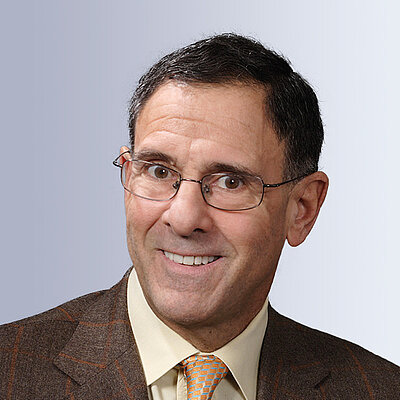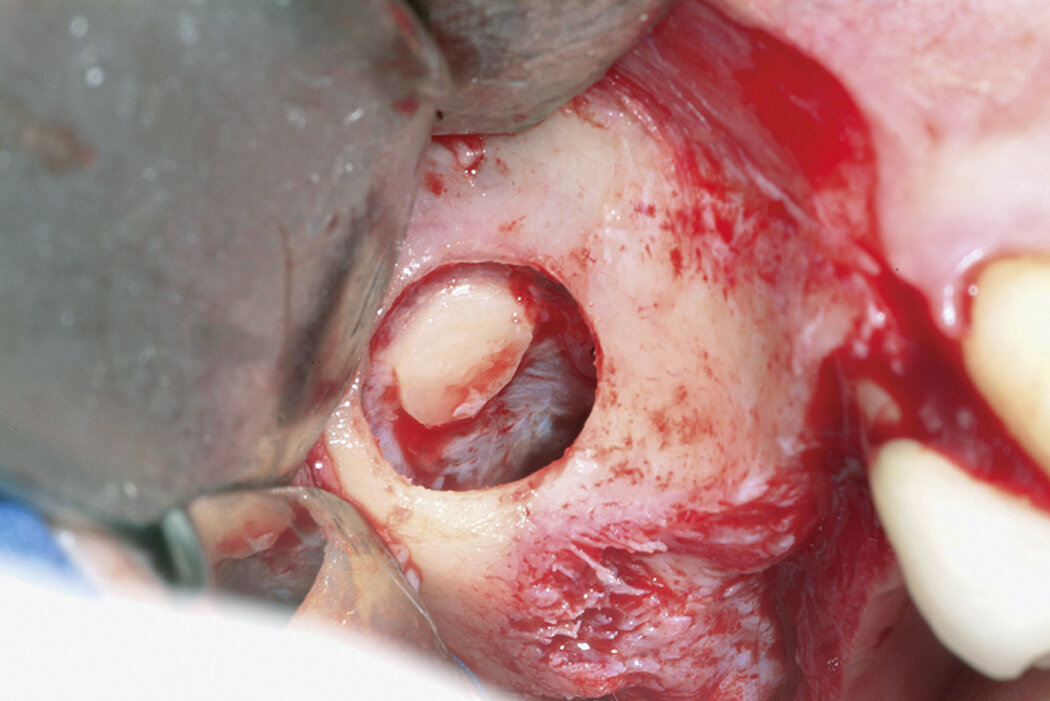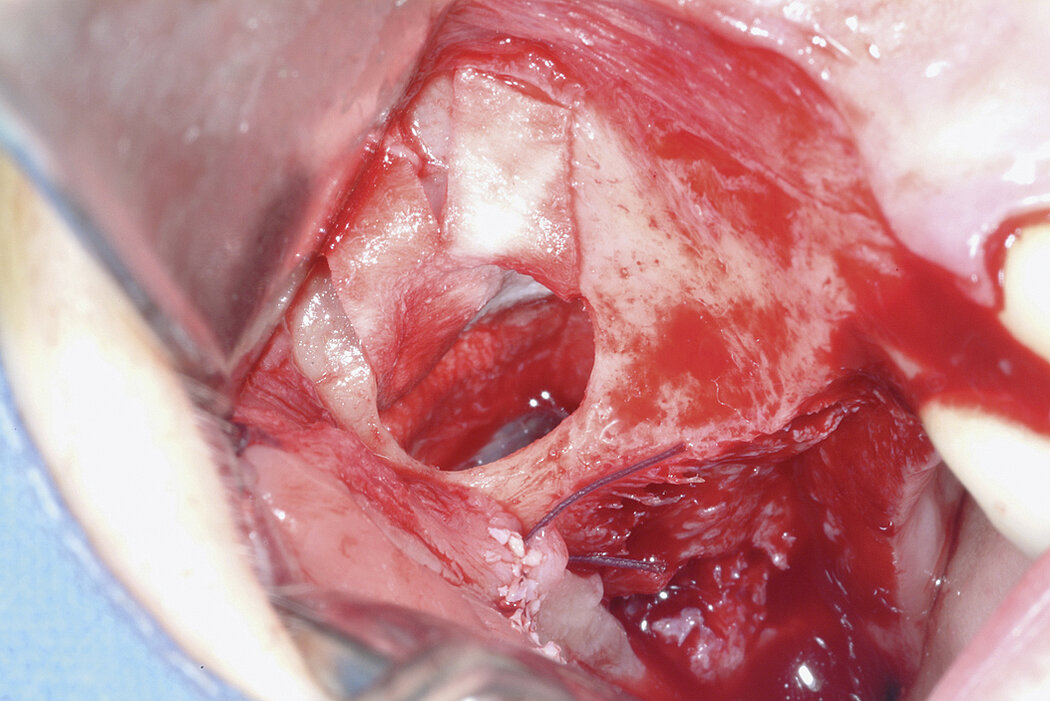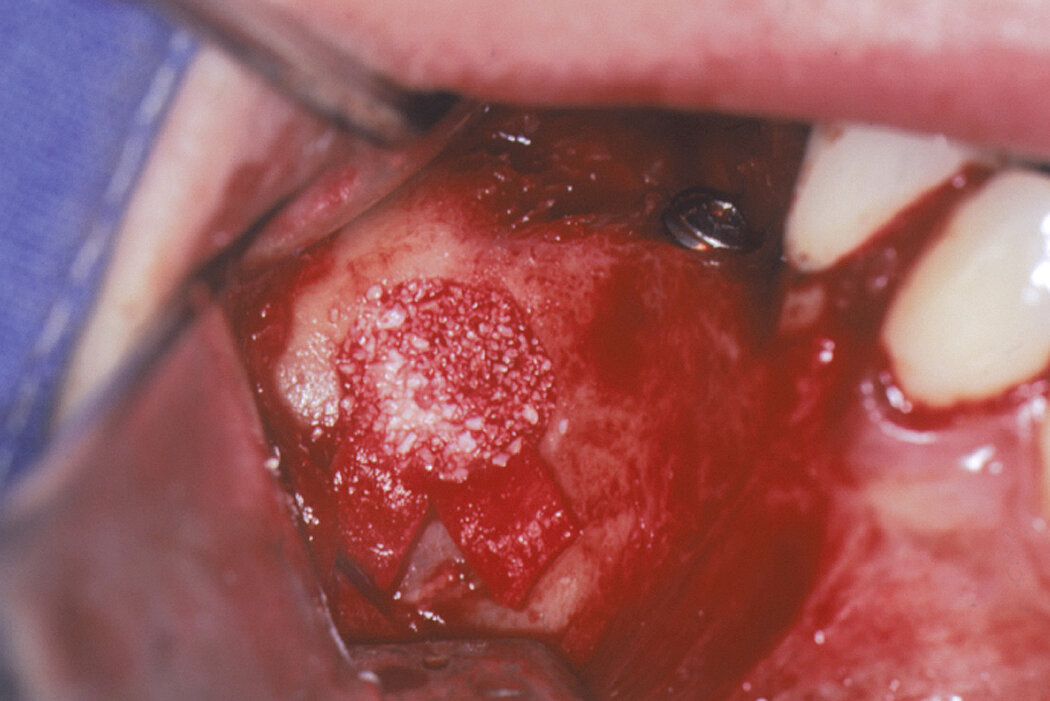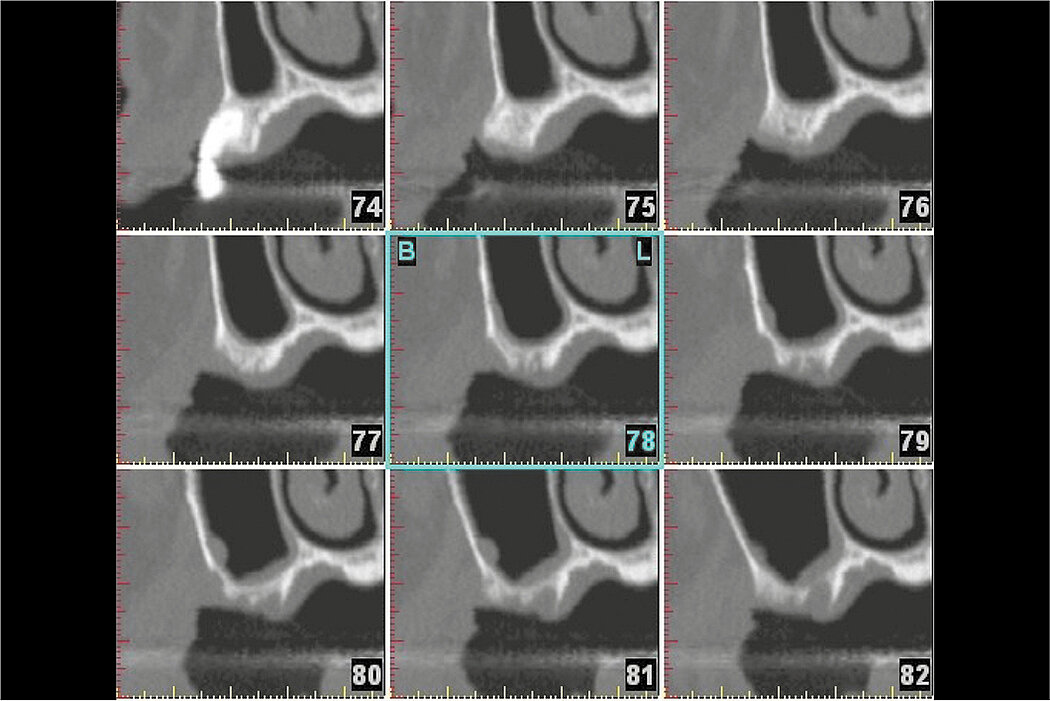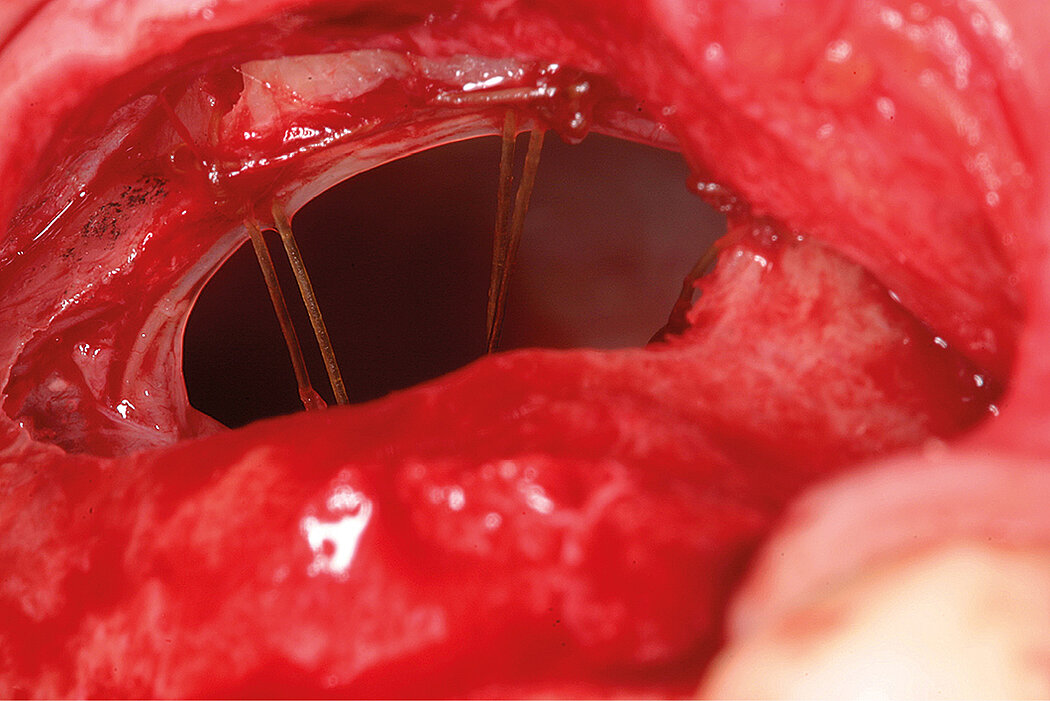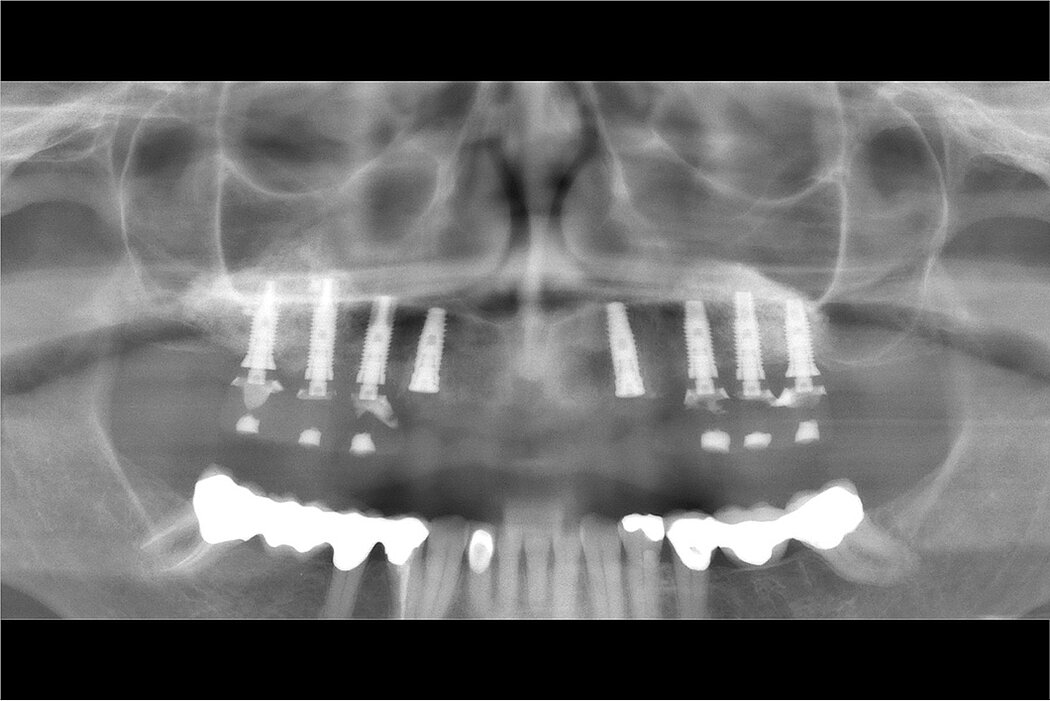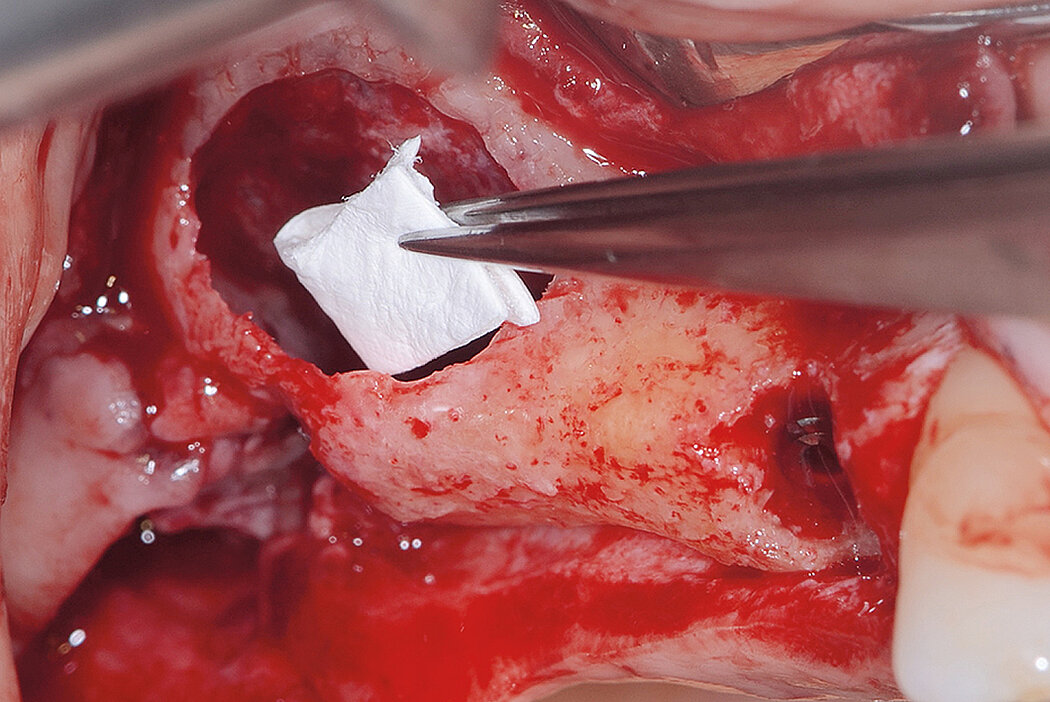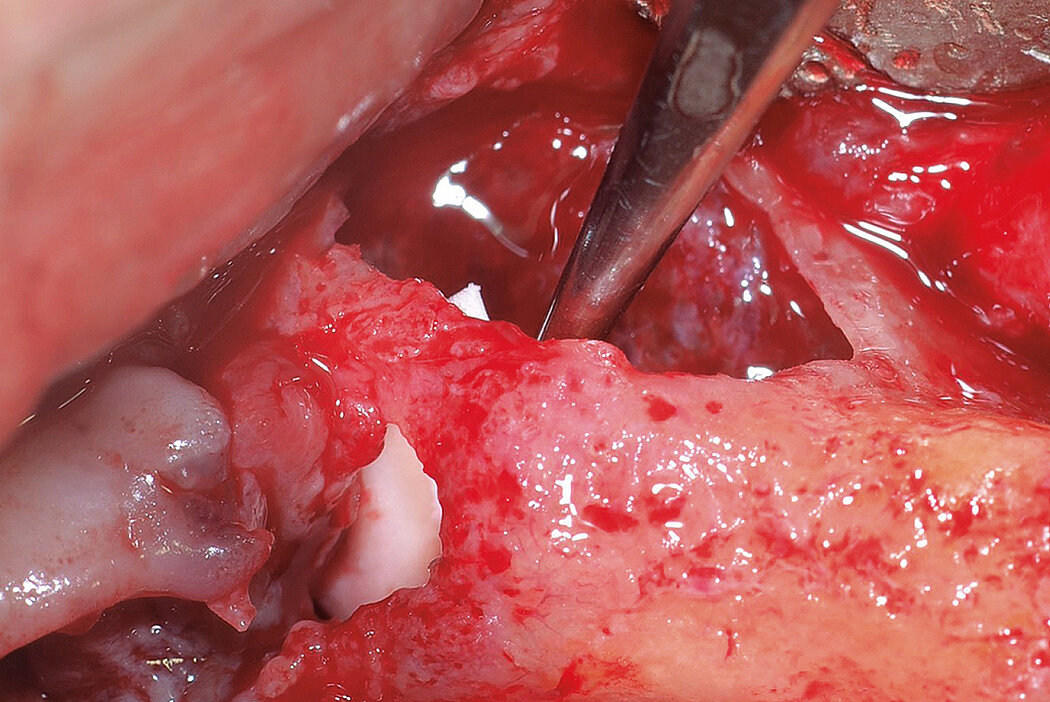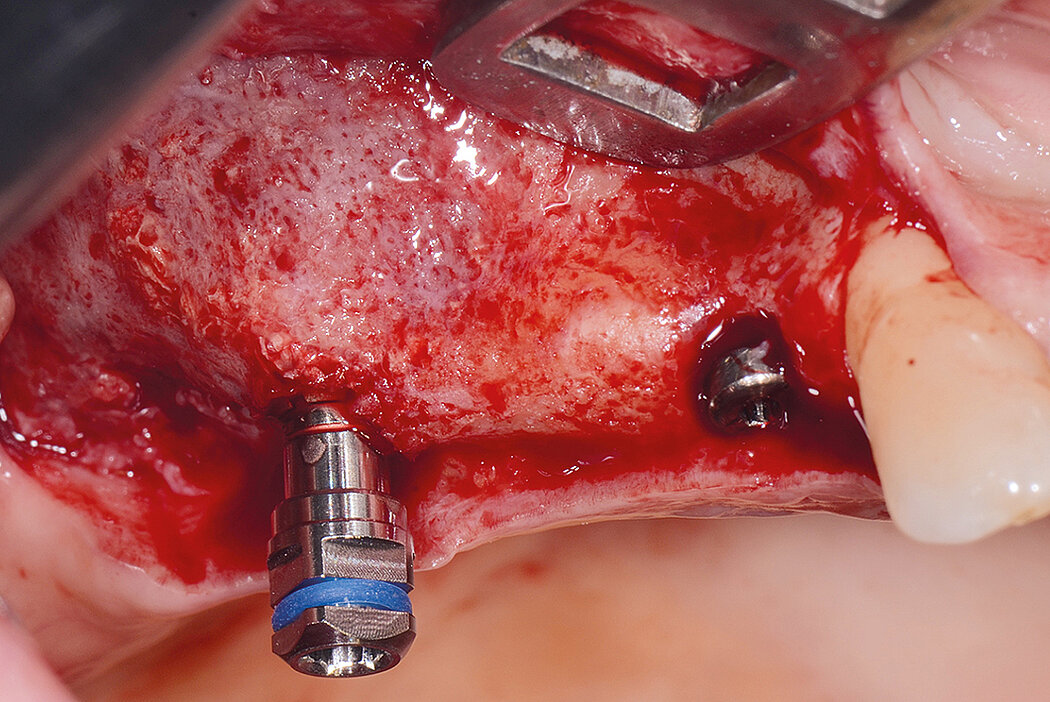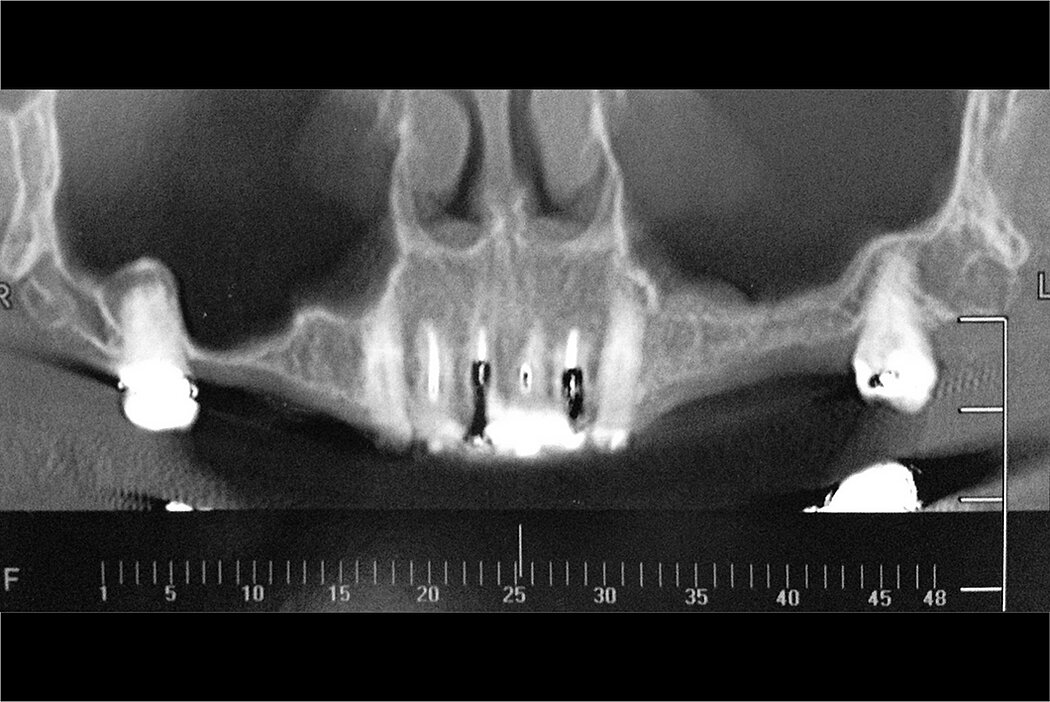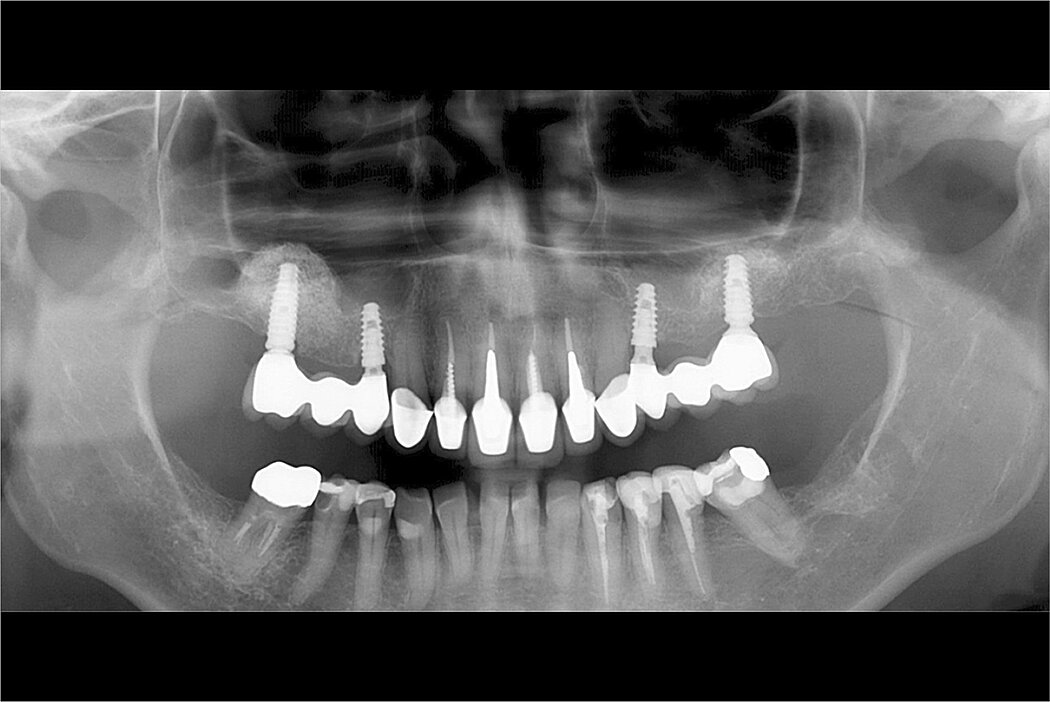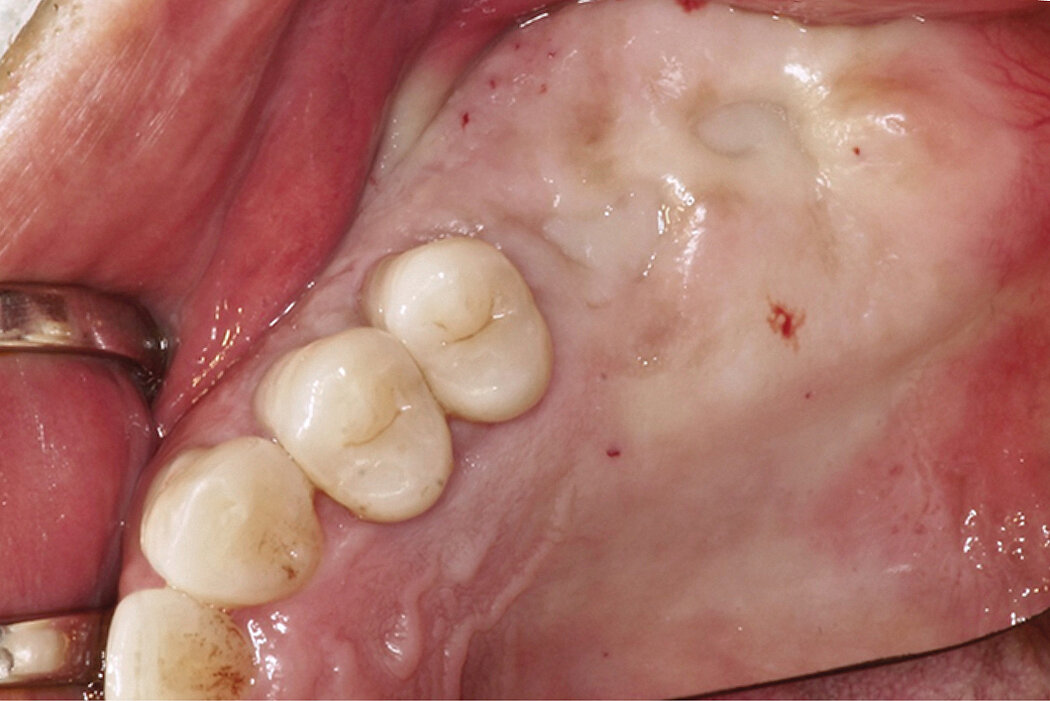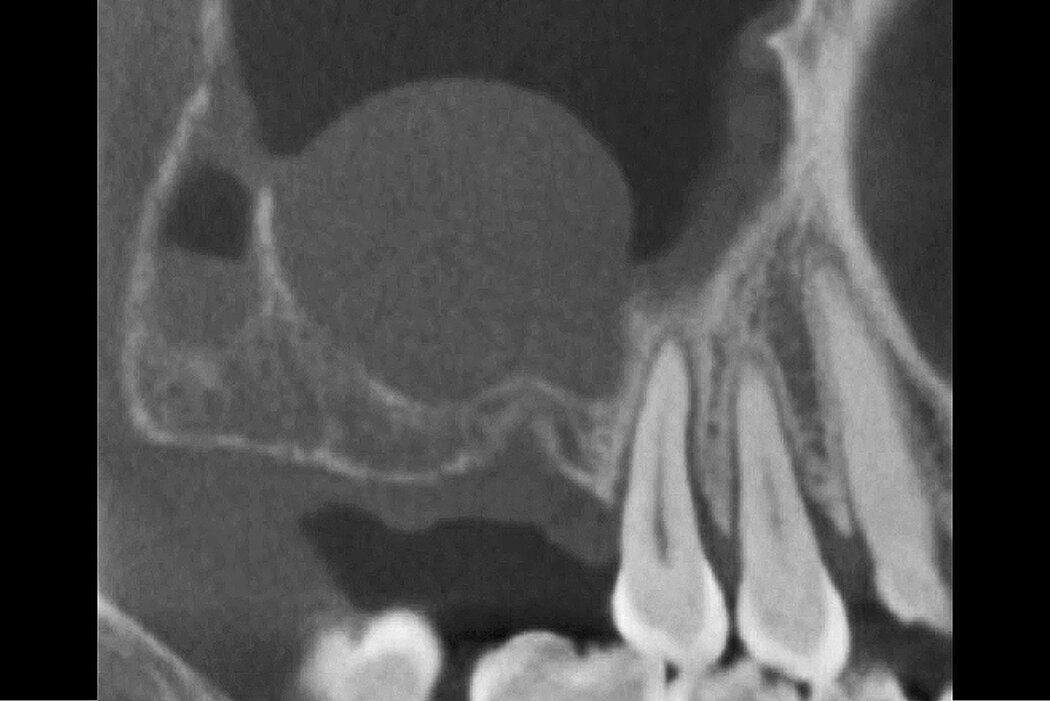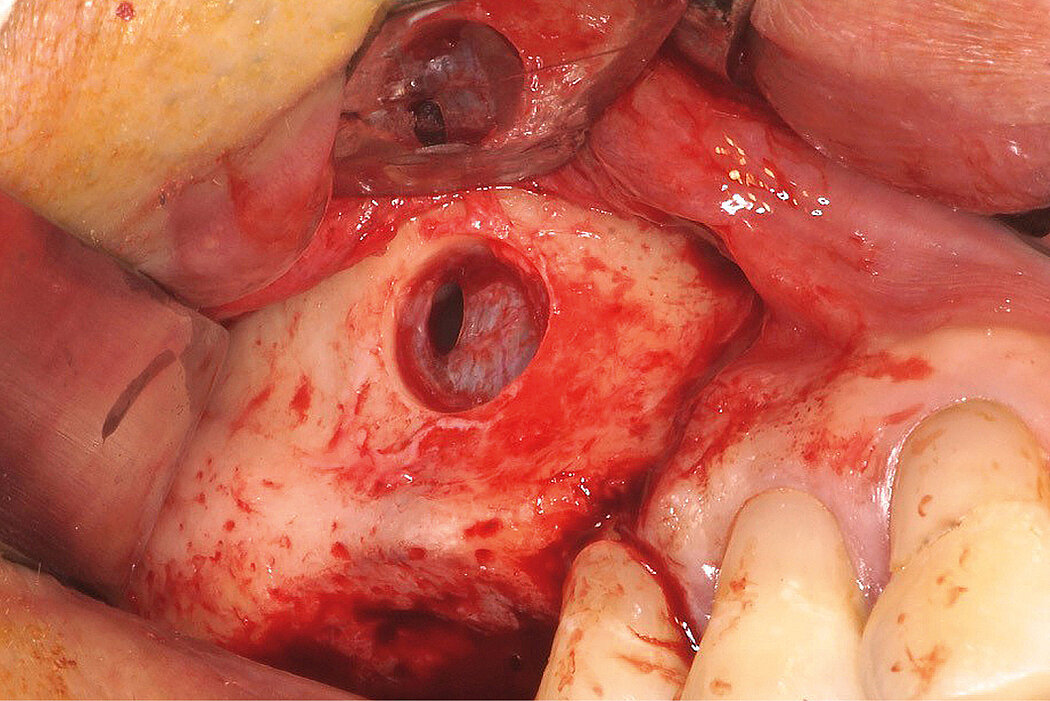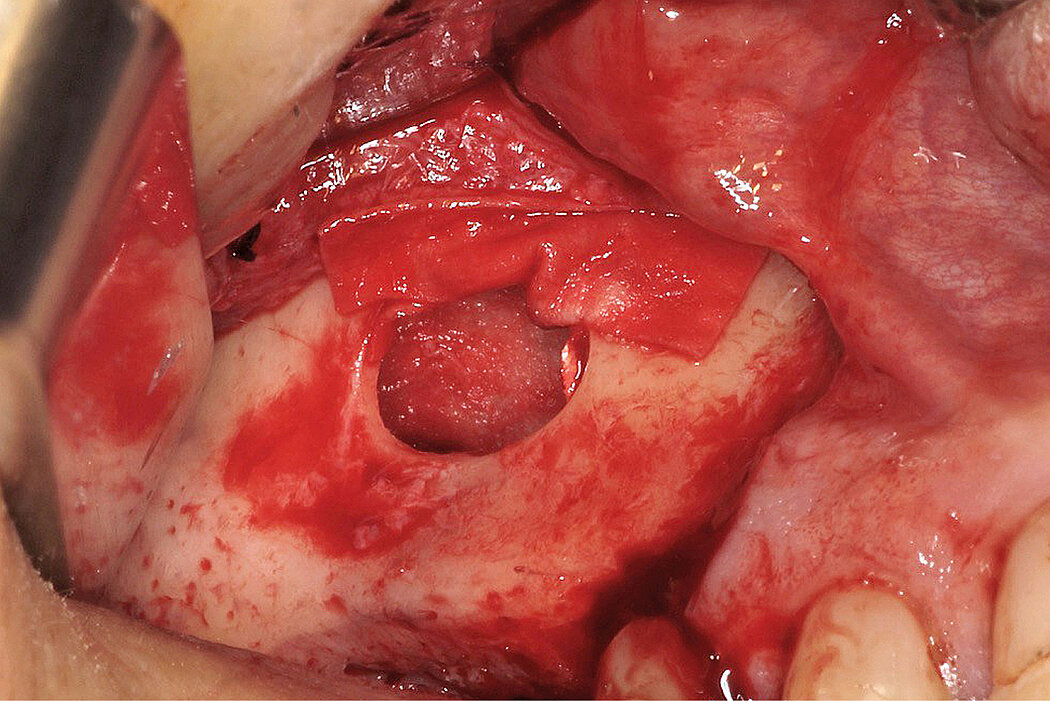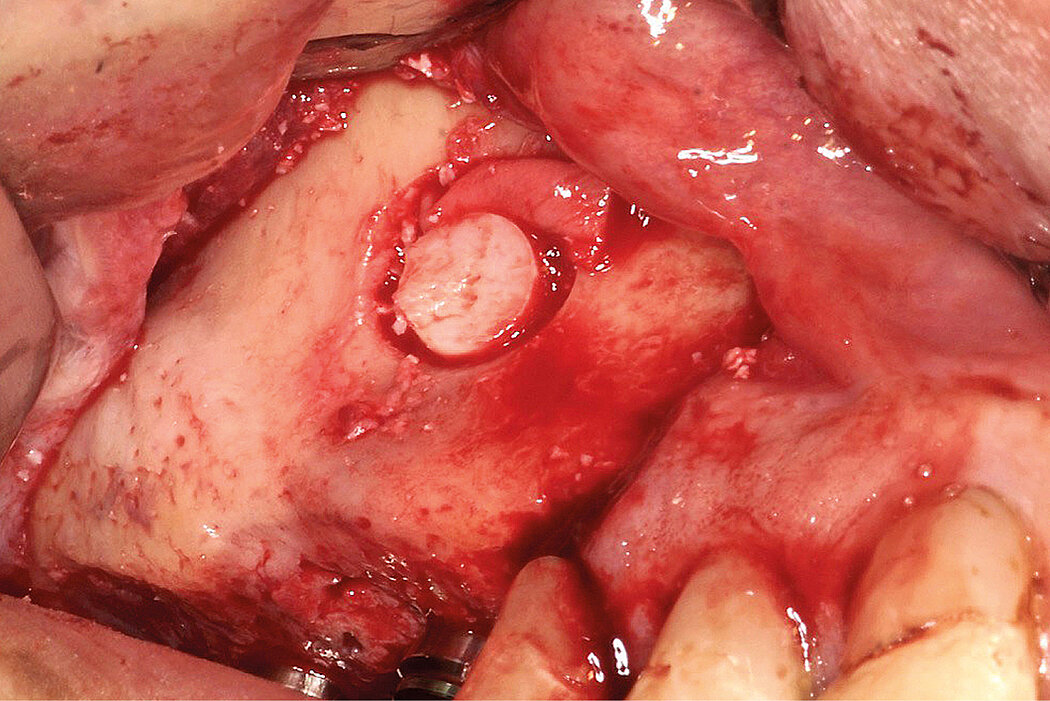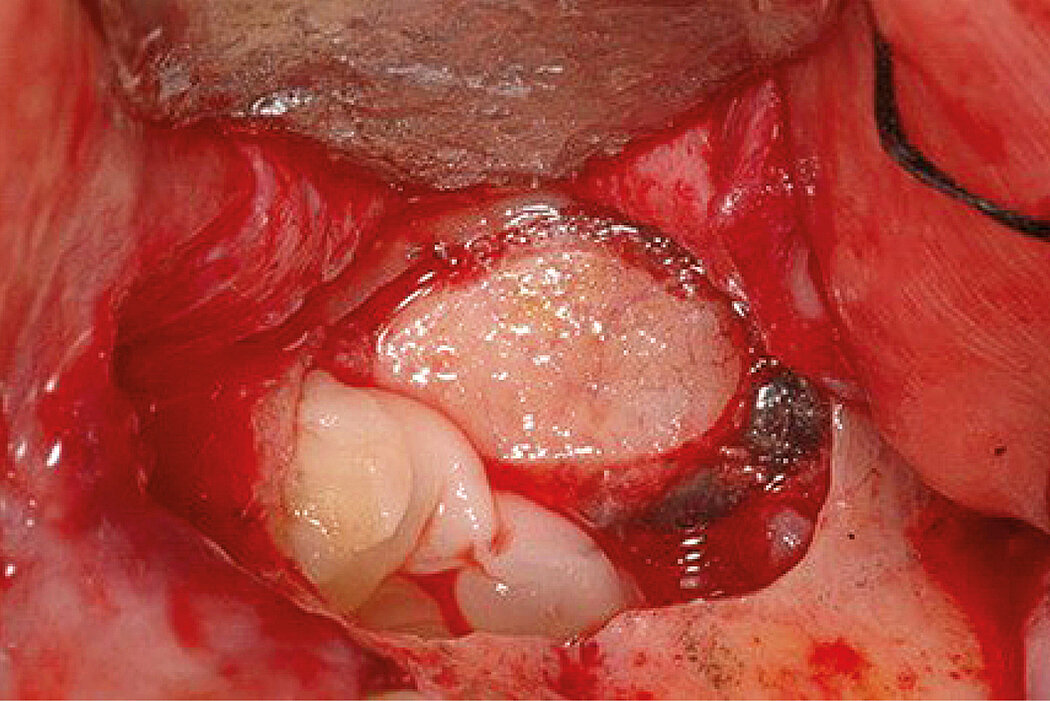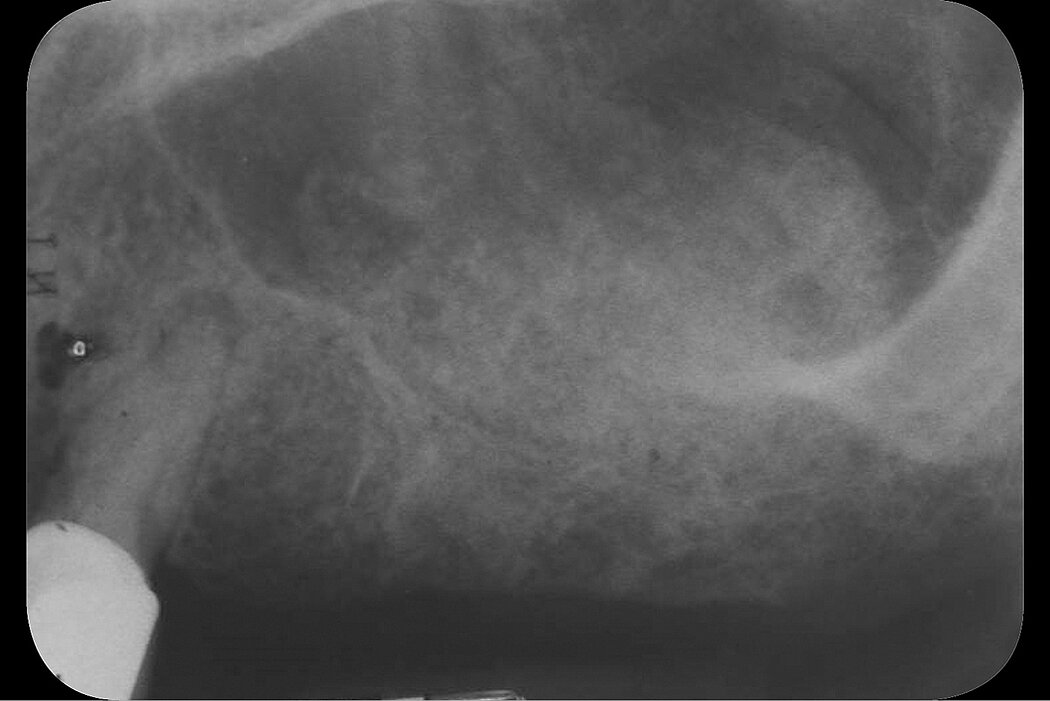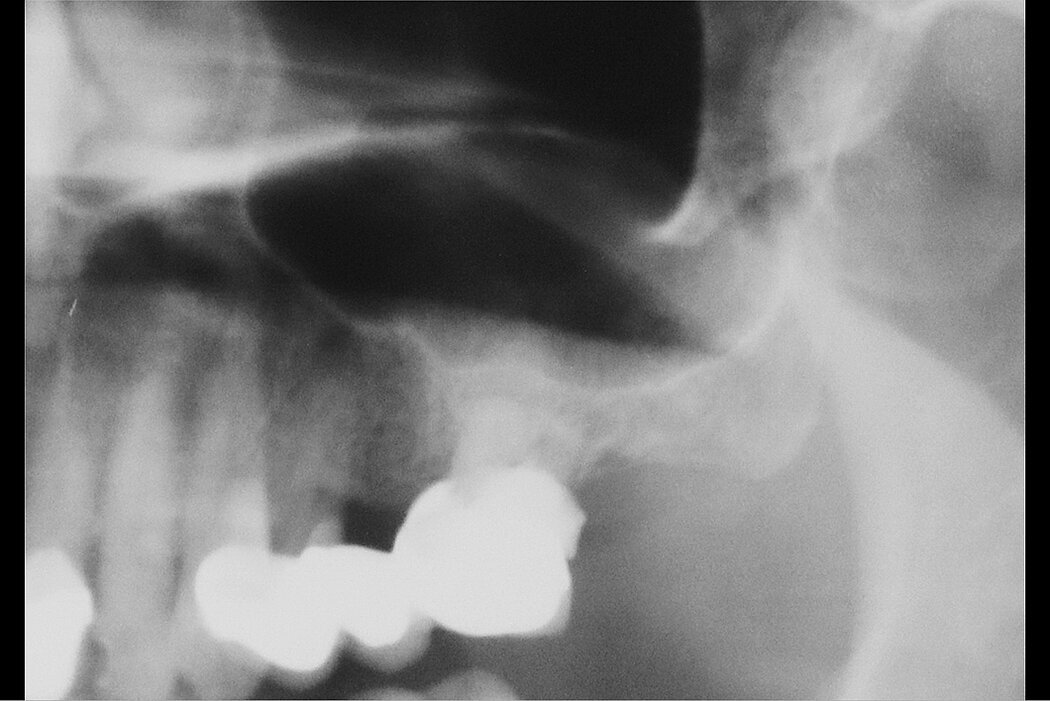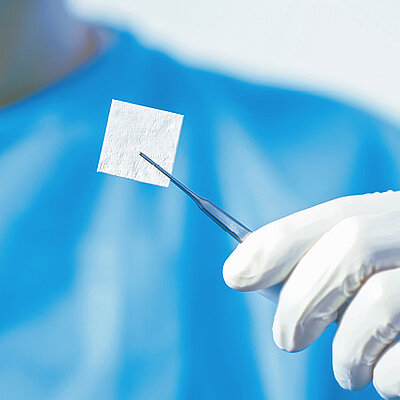Lateral Sinus Floor Elevation

Clinical Cases
Lateral Sinus Floor Elevation
Clinical challenge
A sinus floor elevation was carried out with a lateral window approach. Two implants were placed 4-6 months later.
Aim / approach
Today’s modern implants possessing a micro-thread and conical form allow primary stability at a bone height of 2-3mm. Thus simultaneous implantation and bone augmentation can be carried out more often than in the past. The simultaneous procedure should not be chosen if bone quality is particularly bad. This includes absent cortical bone or deep defects on the crest of the ridge. In this case a staged approach should be chosen.
When implantation and augmentation are performed at the same time I generally load implants 6 months after implantation. Ongoing clinical investigations are analysing whether reduction of this healing process to 4 months is possible.
Conclusions
I am keeping the diameter of the lateral window as small as possible in order to allow the largest contact surface between Geistlich Bio-Oss® and the bone wall. In addition, it provides stability for the bone substitute. The window is therefore a little larger than the diameter of the syringe I use to insert Geistlich Bio-Oss® into the subantral cavity.
In case of a perforated sinus membrane, the sinus membrane should be carefully detached from the bone wall at a reasonable distance from the perforation, thus loosening tension from the membrane and reducing the size of the perforation. A dry Geistlich Bio-Gide® should be subsequently placed over the perforation. Only after the Geistlich Bio-Gide® is positioned a flat instrument can be used to moisten Geistlich Bio-Gide®.”
I entirely dispense with using autogenous bone in sinus floor augmentation. Various clinical studies with histomorphometric analysis have demonstrated that using autogenous bone only, or in combination with bone substitutes, does not lead to an amelioration of the clinical outcome.1 Grafting of the bone, however, extends the operation time, creates a new surgical site and complicates the course of surgery. The successful use of Geistlich Bio-Oss® alone in sinus floor augmentation has been demonstrated in various publications.2-4 Yet, I make sure I keep Geistlich Bio-Oss® in close contact with the bone walls. At these contact sites new bone will grow in. Therefore, I use small granules of Geistlich Bio-Oss® (0.25-1mm particle size).
References:
- Del Fabbro M, et al., R.; Int J Periodontics Restorative Dent 2004, 24: 565-77 (Systematic review)
- Valentini P, Abensur D, Int J Oral Maxillofac Implants 2003; 18: 556-60 (Clinical study)
- Hallmann M, et al., Int J Oral Maxillofac Implants 2002; 17: 635-43 (Clinical study)
- Valentini P, et al., Int J Periodontics Restorative Dent 2000;20(3): 245-53 (Clinical study)
Lateral sinus elevation with 13-year follow-up
Clinical challenge
A 63-year-old female patient presents with hopeless maxillary teeth and a desire for a fixed reconstruction. A staged case was planned with the canines used as abutments for a fixed provisional while sinus augmentation and delayed implant placement were being accomplished. The case presented with 1-2mm of crestal bone in the molar sites. During sinus augmentation surgery the thin Schneiderian membrane on the right side was extensively torn. A collagen membrane repair procedure was performed and bilateral sinus augmentations were completed with Geistlich Bio-Oss® as the sole grafting material covering the lateral window with a Geistlich Bio-Gide® membrane. After an extended delay (financial) implants were placed in the grafted sinuses and a bone core harvested through the lateral window. The anterior teeth were extracted and the provisional was extended to the posterior implants. Implants were later placed in the canine sites and the final prosthesis was fabricated. The final follow-up is 13 years on from the sinus augmentation.
Clinical outcome at a glance
Objectives
- Staged sinus floor elevation with 100% Geistlich Bio-Oss® and Geistlich Bio-Gide® when only 1–2mm crestal bone remains
- Fixed maxillary reconstruction on both sides
- Successful implant placement 1-year after sinus floor elevation
Conclusion
- Two-stage sinus floor elevation treatment
- Successful sinus floor elevation of severe pneumatisation with Geistlich Bio-Oss® and Geistlich Bio-Gide® shows stable bony volume after 13-year follow-up
Aim / Approach
There are 3 interesting challenges in this case:
- Sinus augmentations performed with 100% Geistlich Bio-Oss® when only 1–2mm of crestal bone remains
- Achieving a successful result in theface of an extensive perforation
- Assuming some loss of the existing crestal bone due to biologic width formation, the molar implants have existed with Geistlich Bio-Oss® likely at the crest for close to 10 years
Conclusion
- Cases with severe pneumatisationcan be grafted with Geistlich Bio-Oss® as the sole grafting material
- Geistlich Bio-Oss® alone, covered with a Geistlich Bio-Gide® membrane can give successful results in compromised clinical situations. Histomorphometric evaluation showed 31% vital bone with all implants successful by any guidlines
- Having Geistlich Bio-Oss® exposed at the crest did not result in periimplantitis
Lateral sinus floor elevation with a bony fenestration of the sinus floor
Clinical challenge
The patient described here is a 56-year old non-smoker and in good general health. She reported a history of dental extraction in right side of the posterior maxillary region about 3 months earlier. The treatment plan envisages a fixed prosthetic restoration, and to achieve this goal, a surgical procedure of sinus augmentation prior to implant placement was performed.
Clinical outcome at a glance
Objectives
- Sinus floor elevation with lateral window approach
- Fixed prosthetic restoration in the posterior maxilla
- Sinus floor elevation prior to implant placement
Conclusion
- Two-stage sinus floor elevation treatment
- This clinical case shows excellent osteoconductive behavior of Geistlich Bio-Oss® and uneventful healing of Geistlich Bio-Gide®
- Good prosthetic results due to excellent osseointegration of the implant in the augmented site
Aim / Approach
A full-thickness flap was raised to expose the lateral wall of the sinus. After osteotomy was performed, the sinus membrane was carefully elevated and space was created for the bonegraft under the sinus membrane. Then a cut out part of Geistlich Bio-Gide® was used to obliterate the fenestration in the lower osseous wall of the sinus. The grafting material Geistlich Bio-Oss®was gently packed into the sinus cavity, followed by placement of Geistlich Bio-Gide® shaped and positioned to cover the antrostomy window. After 8 months, a dental implant was inserted into the grafted site. The prosthetic rehabilitation was performed 4 months after installing the implant.
Conclusion
This clinical case, with 12-month follow-up, showed the employment of Geistlich Bio-Oss® and Geistlich Bio-Gide® in sinus floor elevation for the purpose of rehabilitation with dental implants. The good prosthetic result achieved confirms the excellent osteocondutive properties for osseointegration.
Elevation in the presence of an antral pseudocyst and simultaneous implant placement
Clinical challenge
A middle-aged male came to the clinic for dental implant placement. The panoramic radiography showed a hazy shadow in the right maxillary sinus. A CBCT scan was taken for further evaluation and revealed a dome-shaped radiopacity. The radiographic impression was an antral pseudocyst. In the region of the 1st molar the residual bone height was enough to avoid a lateral window approach. But the morphology of the residual ridge in the 1st molar area and the presence of an antral pseudocyst were not favorable indicators for a transcrestral sinus floor elevation.
Clinical outcome at a glance
Objectives
- Lateral sinus floor elevation using Geistlich Bio-Oss Pen® and Geistlich Bio-Gide®
- Augmentation is simultaneous with implant placement in sites 16 and 17
- Aspiration of a small cystic lesion in the sinus cavity
Conclusions
- One-stage sinus floor elevation treatment
- Very promising clinical outcome with the use of Geistlich Bio-Oss Pen® and Geistlich Bio-Gide®
- Geistlich Bio-Gide® is very suitable for repairing a perforated Schneiderian membrane
Aim / Approach
In order to ensure that the radiopacity would be nothing but a non-symptomatic antral pseduocyst, sinus floor elevation via the lateral window technique was planned. After opening up a bony window, I was able to aspirate the small cystic lesion with yellowish mucus. During the procedure, a perforation was found and successfully repaired with a Geistlich Bio-Gide®.
Conclusion
Geistlich Bio-Gide® is because of its easy manipulation and its good adhesion to the Schneiderian membrane a great product for the perforation repair and should be properly trimmed and placed to ensure it spreads sufficiently to completely cover the perforation.
Elevation with large sinus membrane perforation
Clinical challenge
In this case a long term follow-up of a sinus floor augmentation was carried out. A large Schneiderian membrane perforation was repaired using Geistlich Bio-Gide® and platelet-rich fibrin (PRF), and a sinus floor grafting was performed with Geistlich Bio-Oss® particles. A 61-year old woman came to the dental office and asked for an implant-supported prosthesis in the area of the left 2nd premolar and 1st molar. The edentulous area had a bone height of 4-5mm. A sinus floor elevation was planned followed after 7 months by implant placement. During the opening of the lateral window to the sinus floor, a Schneiderian membrane perforation occurred caused by the rotary bur due to a very thin Schneiderian membrane. In order to repair the complete perforation site Geistlich Bio-Gide® and PRF were used to cover the perforation. Afterwards the sinus floor was elevated with 1g of Geistlich Bio-Oss® particles. The implant had been placed 7 months after augmentation with a good primary stability. Prosthesis construction was done 4 months after implant placement. After a 2-year follow-up period, the implant showed no marginal bone resorption, the bone grafting area showed minimal volume change and good support to the implants.
Clinical outcome at a glance
Objectives
- Sinus floor elevation using Geistlich Bio-Oss® and Geistlich Bio-Gide®
- Repairing a large Schneiderian membrane perforation with Geistlich Bio-Gide®
Conclusions
- Two-stage sinus floor elevation treatment
- Effective bone support and stable bone volume by using Geistlich Bio-Oss®
- Effective application of a Geistlich Bio-Gide® in a large Schneiderian membrane perforation
Aim / Approach
To demonstrate the efficiency of Geistlich Bio-Gide® for repairing a large Schneiderian membrane perforation and good long-term stability of Geistlich Bio-Oss® granules in sinus graft procedures showed minimal volume change.
Conclusion
Geistlich Bio-Gide® is effectively used for repairing major sinus membrane perforation and sinus augmentation with Geistlich Bio-Oss® granules is effective in bone support and stable volume.

